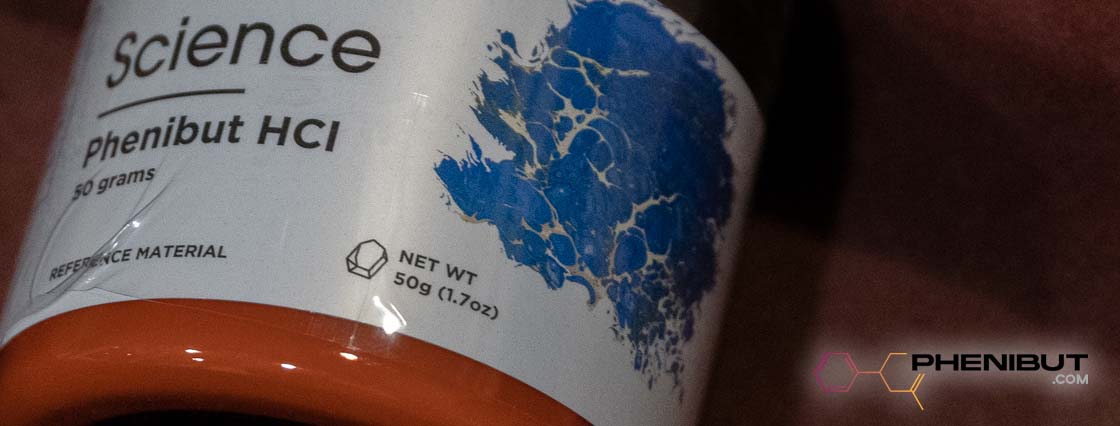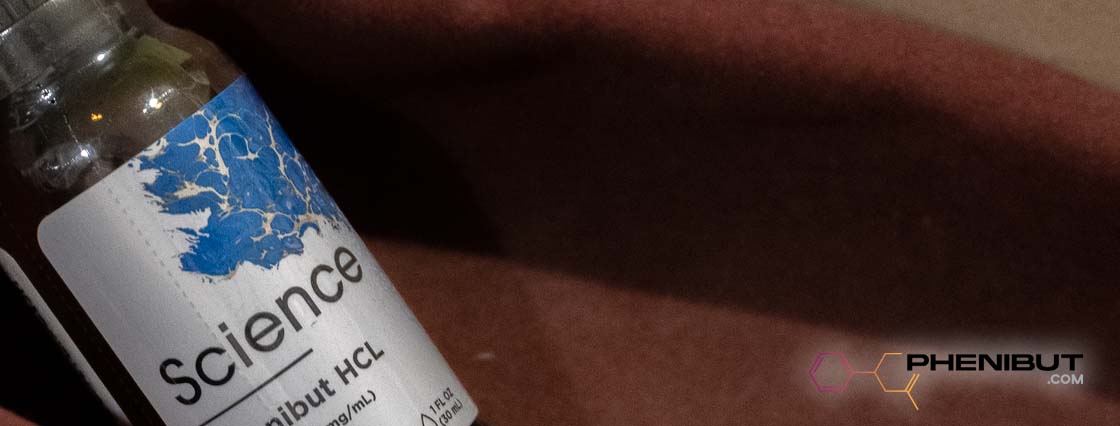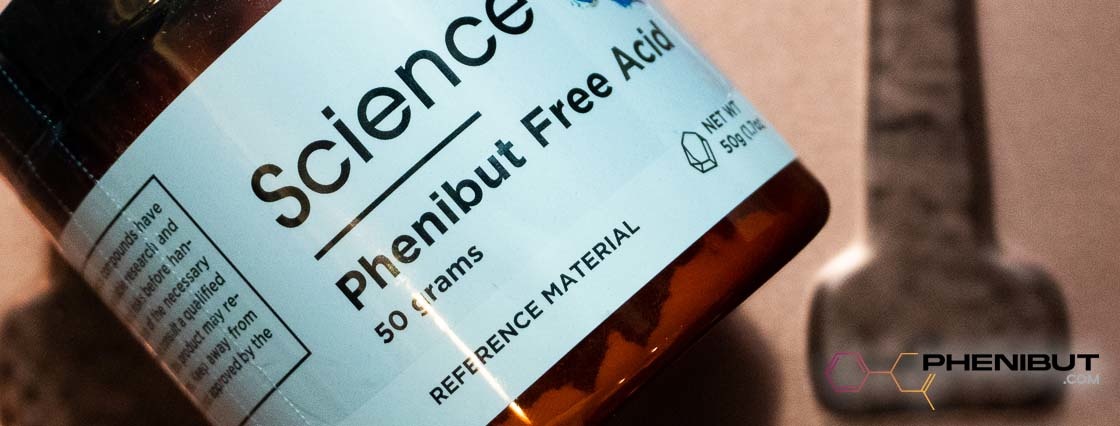Looking for an answer to the question of “how long does phenibut last?” You’ve come to the right place.
Phenibut isn’t a new nootropic, but it’s now firmly on the radar of nootropic researchers as we still try to understand its properties and effects.
One thing’s certain: the effects of phenibut are not relatively short-lived.
There are reports of its effects lasting more than 24 hours following ingestion by a human. This duration of phenibut effects is partly why the compound is so promising to study.
But exactly how long do its effects last? How long does it take for phenibut to kick in? When and how should your test subjects take it? And what phenibut dosage is appropriate for your nootropic research?
These answers can be a bit confusing for first-time researchers, so in this article, we’re laying out everything we know from the literature. Keep reading as we answer the question of “how long does phenibut last?”
Order Phenibut online from the best vendor in the world!
Great prices, quick shipping, and guaranteed delivery.
Disclaimer: Phenibut.com contains information about products that are intended for laboratory and research use only, unless otherwise explicitly stated. This information, including any referenced scientific or clinical research, is made available for educational purposes only. Phenibut.com makes every effort to ensure that any information it shares complies with national and international standards for clinical trial information and is committed to the timely disclosure of the design and results of all interventional clinical studies for innovative treatments publicly available or that may be made available. However, research is not considered conclusive. Phenibut.com makes no claims that any products referenced can cure, treat or prevent any conditions, including any conditions referenced on its website or in print materials.
What Is Phenibut?
First, though, what is phenibut?
Phenibut is a synthetic amino acid [1]. The term “phenibut” is a shortened version of the compound’s chemical name: aminophenylbutyric acid. Phenibut has a chemical structure that closely resembles that of the neurotransmitter GABA [1]. Phenibut can bind to some of the same receptors as GABA and have some of its same effects [1]. Specifically, it’s a GABAB receptor agonist, and a GABAA receptor agonist at higher concentrations.
GABA plays an important role in reducing the excitability of neurons and inhibiting them. Imagine neurons as light switches. Some neurotransmitters help turn on the light; GABA (and phenibut) turns that light off [1].
That means that both GABA and phenibut relax the brain. That’s why phenibut is used in some countries as an anti-anxiety medication. It’s also used to treat a number of other conditions like sleep disorders, vestibular disorders, tics, and stuttering [1]. Some research has also documented the recreational use of phenibut for its anxiolytic and euphoric properties [2, 3].
Phenibut test subjects report that it can make them feel less socially anxious. But they generally report that phenibut does not cause the brain fog or the memory lapses that other substances, like alcohol, can cause. In fact, there is some evidence that phenibut can provide cognitive enhancement at low doses [1].

Phenibut Side Effects and Safety
Is phenibut well-tolerated by otherwise healthy adults?
In summary, in the vast majority of clinical studies on phenibut using doses between 250mg and 1g a day, no side effects were reported [1]. It’s considered to be well-tolerated by most people. That’s why it has been used as a medication for almost 40 years in countries like Russia, Ukraine, and Belarus [1].
However, there are some things you have to be cautious about when using it in your research. There are some rare but occasional side effects; there’s a possibility of an allergic reaction; there are some substances it shouldn’t be mixed with; and, one should be aware of the possibility of phenibut dependence [3, 4, 5].
Note, too, that among exposures in which phenibut was the only drug or agent involved, there has been at least one death reported by a U.S. poison center [6].
Side effects
Side effects are quite uncommon, but they may occur. Potential phenibut side effects include [4, 5, 7]:
- Drowsiness
- Nausea
- Irritability
- Headache
- Sedation
Also, while rare, one should be aware of the potential for allergies [7]. Allergic reactions to phenibut can include itchiness and rashes.
Interaction effects
Phenibut has a similar effect as other substances that also affect the GABA receptors. Phenibut researchers should take precautions that subjects don’t mix such substances, and that they’re made aware of potential interactions. Taking two different substances that affect the same neuron pathways can amplify the effect of either and/or make them last longer.
Make sure your test subjects avoid taking phenibut concurrently with:
- Alcohol
- Benzodiazepines
- Anticonvulsant medications
- Opioids
- Anti-psychotics
- Sedatives
Avoiding the concurrent use of phenibut with these substances will help reduce the risk of any unpleasant interaction effects.
Dependence and withdrawal
Again, like many substances, there’s a risk of phenibut dependence [4, 5]. It is important to properly inform your subjects of this risk. When designing your research protocol, you should take precautions to avoid administering phenibut in such a way that can cause dependence.
Dependence occurs when a person takes phenibut so often that their body stops producing its own GABA. Withdrawal effects occur when a person has developed a dependence and then abruptly stops taking phenibut. Since the body has reduced its own GABA production, and since the phenibut is no longer available, there is a reduction in the activity on GABA receptors that creates withdrawal symptoms.
Withdrawal symptoms can include rebound anxiety, anger, agitation, irritability, insomnia, auditory and visual hallucinations, psychomotor agitation, and even psychosis [4, 5, 8, 9].
Avoiding negative effects
How can your research subjects avoid these negative effects of phenibut?
Withdrawal can be avoided by keeping the phenibut dosage low, ensuring both that a study protocol doesn’t have subjects consuming it too often and that it not be mixed with other substances.
Phenibut dosing protocols in the research literature are varied, but we’ve noticed the following commonalities that may help reduce the risk of test subjects developing phenibut dependence:
- Studies typically don’t give subjects more than 750 mg in a single dose.
- Studies rarely give subjects more than 2 grams in a day.
The following guidelines in your research protocol may also help reduce the risk of side effects and dependence:
- Consider protocols that have subjects using phenibut a maximum of 2 times per week.
- Ensure subjects are not allergic to phenibut.
- Ensure subjects are informed about refraining from phenibut if they are also taking benzodiazepines, opioids, other depressants, or alcohol.
- Consider evaluating your test subjects to preclude individuals with a propensity for addiction from participating in phenibut research.
Some caution in research protocol can go a long way towards the safety of your participants in using phenibut.
With that out of the way, let’s evaluate the primary question of this article: How long does phenibut last?
How Long Does Phenibut Last? | A-Z Guide
Exactly how long phenibut lasts depends on a few things:
- The subject’s size
- The subject’s age
- The phenibut dosage
If your human subject is younger, larger, or takes a smaller dose, phenibut effects will not last as long. If your subject is older, smaller, or takes a larger dose, it will last longer. Keep that in mind when developing your dosing protocol.
In general, subjects can expect phenibut’s effects—or “high”—to last between two to five hours after it kicks in and begins to work.
Within five hours, your subjects may notice that any “high” they felt may start to recede.
But even after that time, there still may be enough in the body to have residual effects that may not be a “high” but can still be powerful. We have seen research that found that some subjects have reported residual effects of phenibut lasting up to 24 hours after taking it [3].
Remember, the effects can be long-lasting, but they’re not necessarily like the effects of alcohol where a person can become inebriated and unable to think properly. A person often has a clear mind with phenibut. Especially at low levels, phenibut has been reported to enhance concentration and cognitive function [1].
The exact effects will depend on an individual’s chemistry and the size of the dose.

Understanding the Phenibut Half-Life
Phenibut has a plasma half-life of 5.3 hours [1].
What is the phenibut half-life?
Half-life is the amount of time it takes the body to clear exactly one-half of the concentration of a substance. The phenibut half-life is just over five hours, which means that after 5 hours, the concentration of phenibut in a person’s blood will have been reduced by 50% [3].
If a person takes a 500mg dose, there will still be ~250mg in that person’s body five hours from ingestion. Five hours thereafter, there will be about ~125mg. And so on.
While 125mg may not be enough for a person to feel a strong effect, they still might feel some of the residual effects. Test subjects can feel phenibut working 10 hours or even 20 hours after they take it.
How Long Does It Take for Phenibut to Kick In?
Phenibut is generally slow to kick in. Most test subjects report that it takes about 2 hours before they feel it.
In a research protocol, it may be useful to advise test subjects that they may start to feel the effects of phenibut about two hours after taking it. Once the nootropic kicks in, they’ll likely have about 3-4 hours of its most potent effects before it starts to wear off.
Again, though, it depends on how it is taken.
For example, if you use phenibut FAA in your research and your subjects take it sublingually (so it absorbs into the blood through the skin under the tongue), it kicks in much faster: in about 30 minutes. If your subjects take capsules or mix it in a drink, it may start to work about two hours after it is taken.
Remember, phenibut’s “high” can be mild, so your subjects might not notice that it’s working at all. Phenibut’s purported effects of mood enhancement and anxiety reduction can be subtle.
To really notice the effects, you may choose to structure your research so that subjects go into a social situation or perform cognitive work. Sometimes changing the environment can help make phenibut’s effects more observable.
Phenibut Dosing and Half-Life
Phenibut effects are dose-dependent [3, 8]. That means that higher doses will result in greater effects that last longer (as well as a greater risk of adverse effects). Knowing that greater doses will have longer lasting effects, you can plan your phenibut dosage protocol to be appropriate for the length of your study.
For example, taking 1 gram of phenibut will leave a subject with ~500mg still in their body after 5 hours, ~250mg after 10 hours, and ~125mg after 15 hours. You can expect some residual effects in your subjects to last up to almost 20 hours—maybe even longer.
Alternatively, you could start your subjects with a microdose of 50 mg. They probably won’t feel a huge effect, but they may still self-report as being less anxious, in a better mood, or even with better concentration. At this smaller dose, test subjects likely won’t report the effects lasting as long; they may be gone within a few hours.
So keep in mind when designing your phenibut dosing protocol that the dose will affect how long your subjects will notice effects.
One way of approaching a dosing protocol is to start all test subjects at a low dose. That way, you can see how it affects your test subjects before committing to a higher dose.
Buy Phenibut Online | 2022 Guide
Phenibut is not approved as a medication in most countries. In the United States, phenibut is currently an unapproved “New Drug” under the U.S. Federal Food, Drug, and Cosmetic Act (FD&C Act), and has not been investigated or approved for any uses.
So you’re not going to be able to find it in pharmacies or drug stores.
However, phenibut is available to researchers online and it’s legal to buy for that purpose almost everywhere.
The notable exceptions are Australia, France, Italy, Lithuania, and Hungary—phenibut is banned in these countries.
Even in countries where phenibut is legal, you still need to be careful: Some websites are scams. Make sure that when you buy phenibut online, you do so from a legitimate vendor.
We’ve done a bit of trial and error, so we’re comfortable recommending our source: Science.bio. They’re professional, they ship anywhere and their prices are super reasonable.
Ready to order Phenibut from the top-rated online vendor?
Phenibut Half-Life | The Verdict
How long does phenibut last?
To summarize, phenibut’s effects will last based on a variety of factors specific to each human subject, including size and age. Some subjects report that it can last up to 24 hours.
When designing your phenibut research study, ensure that your test subjects are similarly aware of phenibut’s half-life and the potential side effects from taking phenibut overly frequently or at too high of doses.


